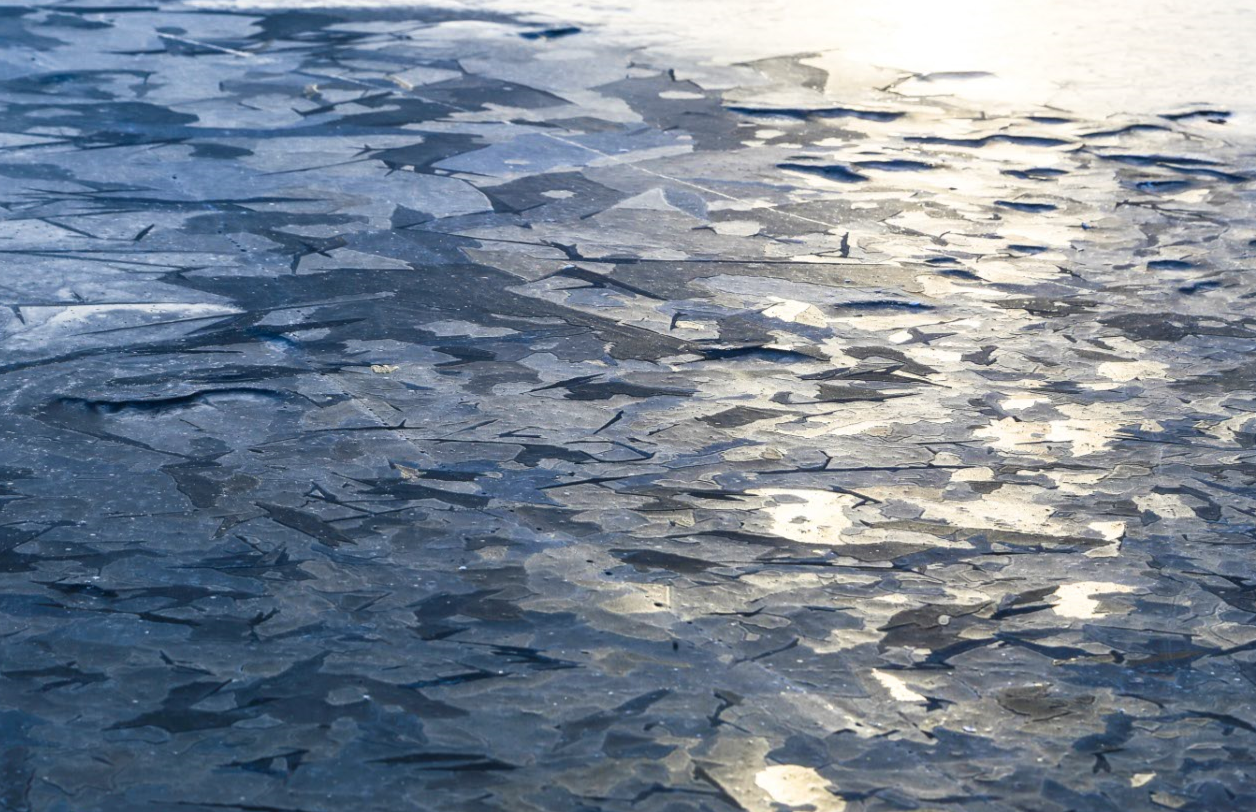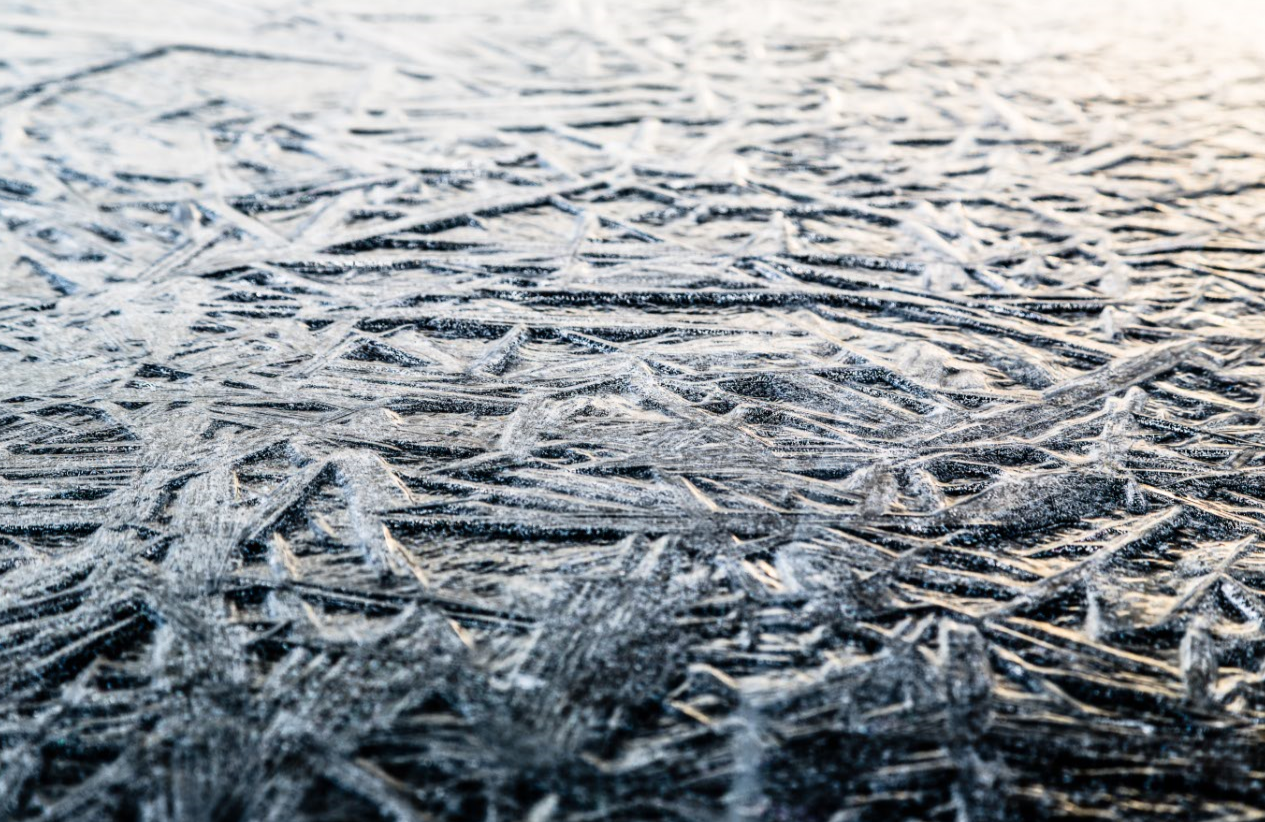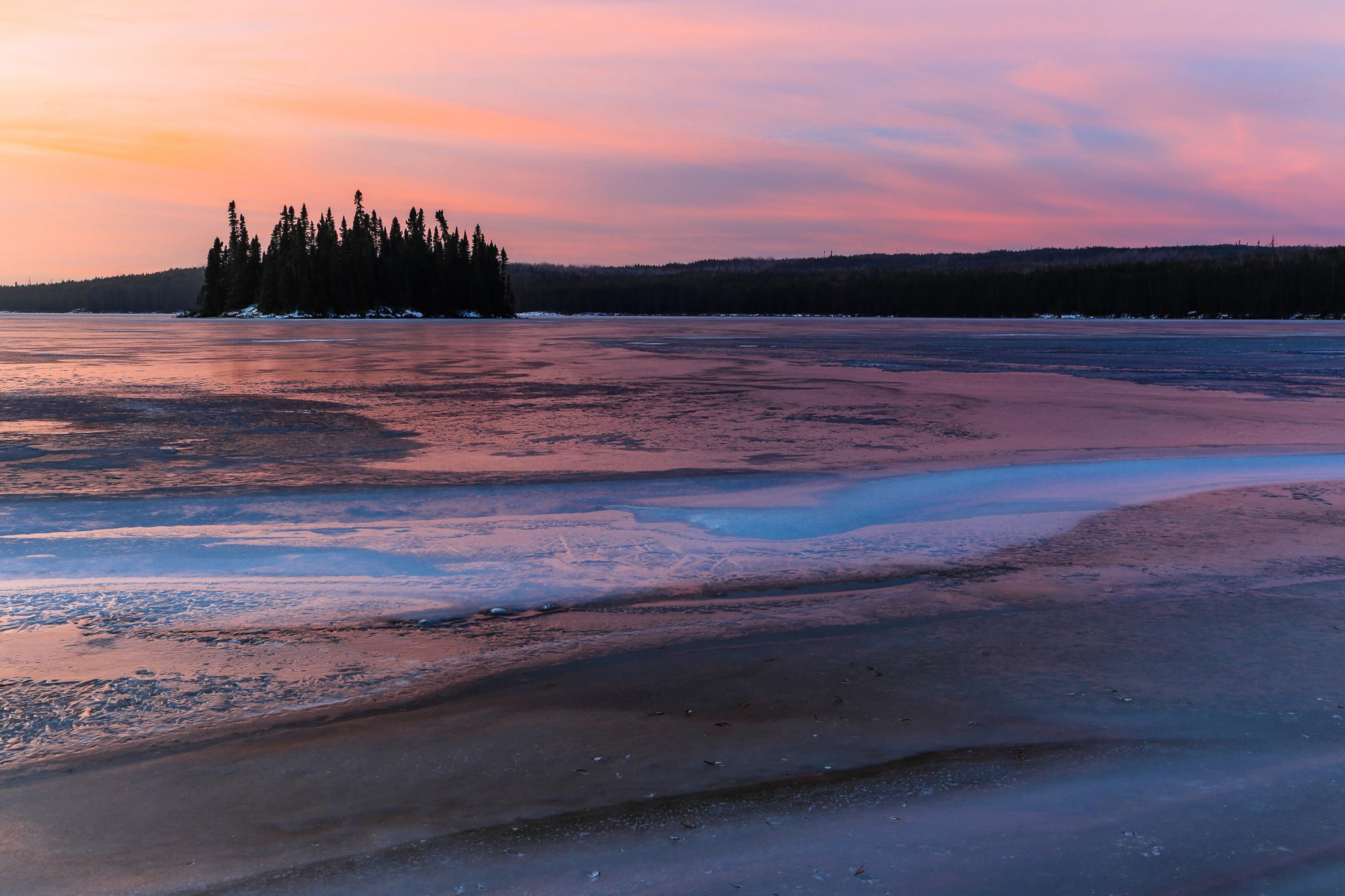Research January 25, 2017
Ever Wondered What Happens at IISD-ELA During the Winter?
By Ken Sandilands, Biologist – Field Coordinator
Located in a sparsely populated region of northwestern Ontario, it is no secret that IISD Experimental Lakes Area (IISD-ELA)—comprising 58 lakes and their watersheds—is pretty remote. In fact, its remoteness is the reason why the location was originally selected. It is only by ensuring that the lakes on which we experiment are pristine and untouched by other human activity that we can be certain the data we get from our whole-ecosystem experiments are the result of our manipulating those lakes—and nothing else.
All of the images you probably recognize of the site are in glorious summer, with sun reflecting off the lakes, beautiful sunsets and our researchers out on the lakes basking in the heat. What you may not realize is that, despite the location’s remoteness and the cold temperatures it can experience, IISD-ELA is actually open and functioning around the year—365 days a year, in fact.
And yes, that includes winter.
Hibernation in Winnipeg
At IISD-ELA most of our researchers spend the winter working on data collected over the open-water field season. This means that many IISD-ELA scientists and researchers spend their time in our Winnipeg headquarters, analyzing results collected during the summer, writing up research and, of course, catching up on emails.
Long-Term Ecological Research (LTER)
Some of us still head out onto the lakes, however. Our Long-Term Ecological Research (LTER) program, for example, monitors five IISD-ELA lakes throughout the year, taking various measurements (such as temperature profiles), sampling the water chemistry, assessing hydrology (inflows and outflows) and measuring population sizes and abundance of the phytoplankton, zooplankton and fish communities.
We do not experiment on these lakes, so their data provides us with reference points for the experimental lakes that are being manipulated. This long-term data record also allows us to look at changes in the lakes over time, such as the effects of climate change.
Over the winter, we continue this monitoring, but at a reduced scale, so we focus only on temperature and oxygen profiles and water chemistry. We sample phytoplankton twice each winter and measure hydrology monthly.
Monitoring Continues at IISD-ELA
One example of the monitoring we do during the winter is the measurement of the “inflows” and “outflows” between certain lakes to explore the impacts of climate change.
When I first started working at the site, I was surprised to find that the water continues to flow between lakes over the winter months. I had assumed that the lake outflows froze solid, but I soon discovered that that was not true.
Usually we would use data loggers at weirs between the lakes to measure these inflows and outflows, but these don’t work in the winter (unless they are heated). Instead, we take monthly trips to IISD-ELA during the winter to take manual measurements of flow at most of our weirs.
At first glance, it may seem as though the weirs are completely frozen.

However, there is still water flowing under the ice. In fact, there is enough water flowing over the weir that it usually does not freeze, but the water vapour and splashes do freeze, creating a crust of ice over the flowing water.
Here is an example of a weir that is partially frozen over.
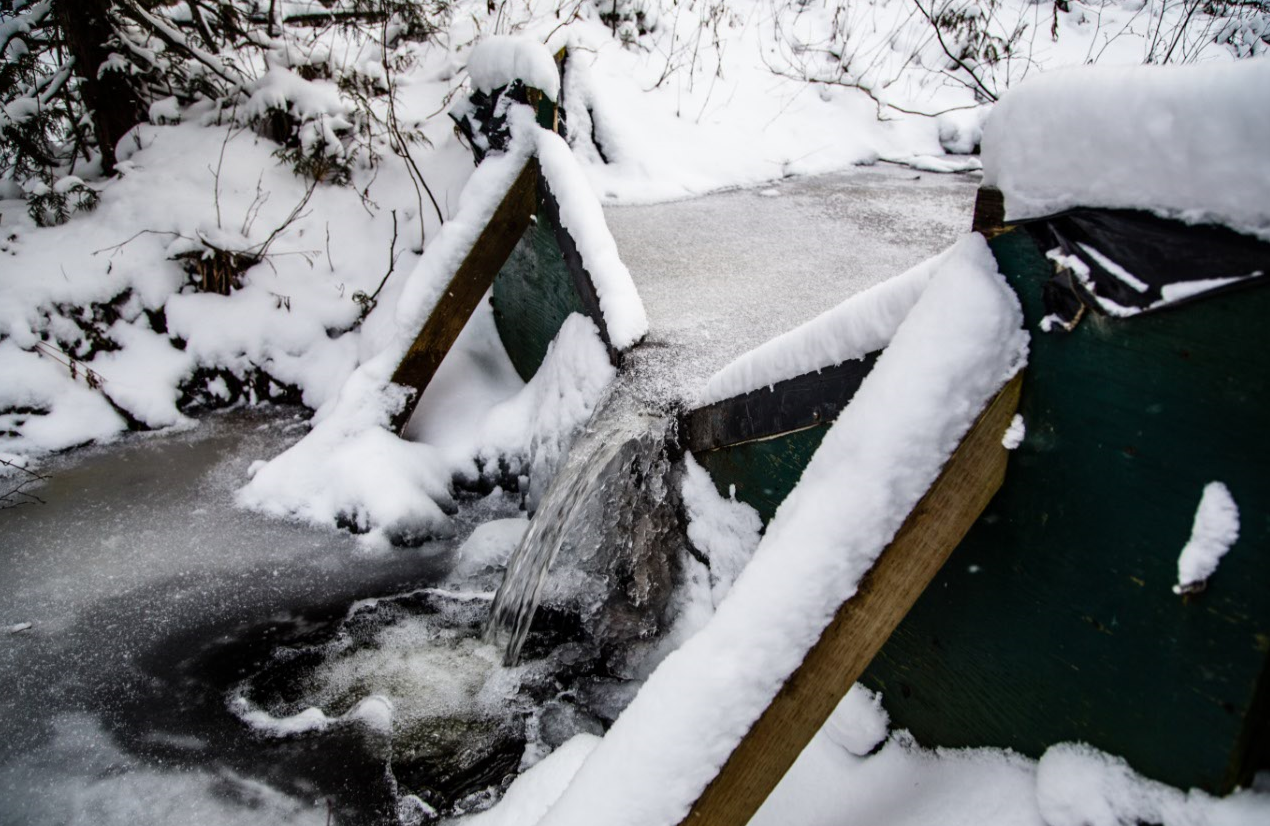
We chip the ice away with an ice chisel and take a measurement of flow over the weir.
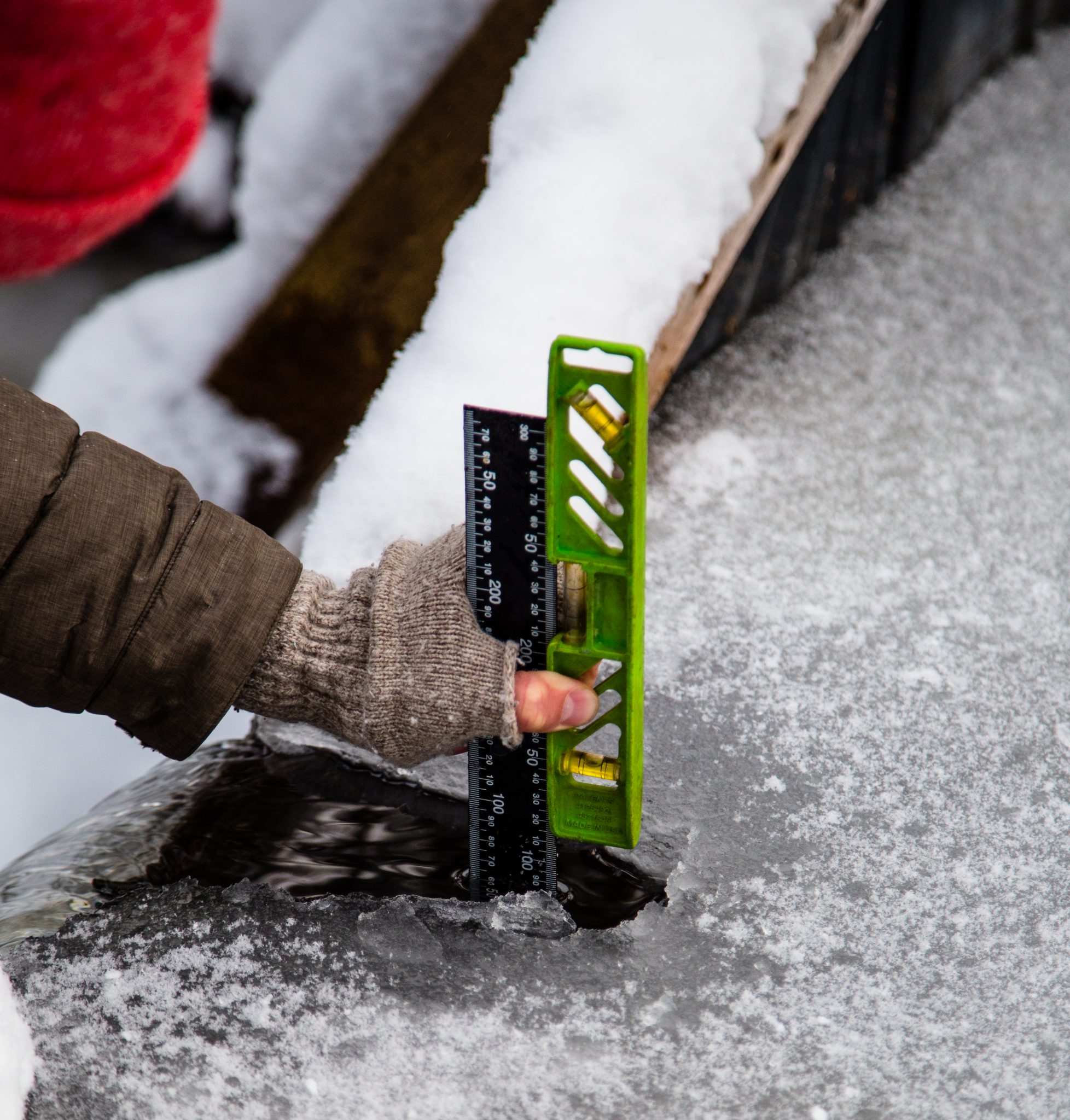
You may be wondering where the water for this winter outflow comes from if the ice is not melting. As the snow accumulates on the lake over the winter, the weight of the snow pushes down on the ice, which pushes (displaces) water out of the lake through the outflow. Imagine a full glass of water with an ice cube in it—if you push down on the ice cube, water will spill out.
We also face a challenge on Lake 239, an LTER lake where we use a flume to measure flow. This flume freezes up easily, but it is fortunately close to the power at the main camp, so we are able to use heat lamps and an insulated cover to keep the flume flowing all winter.
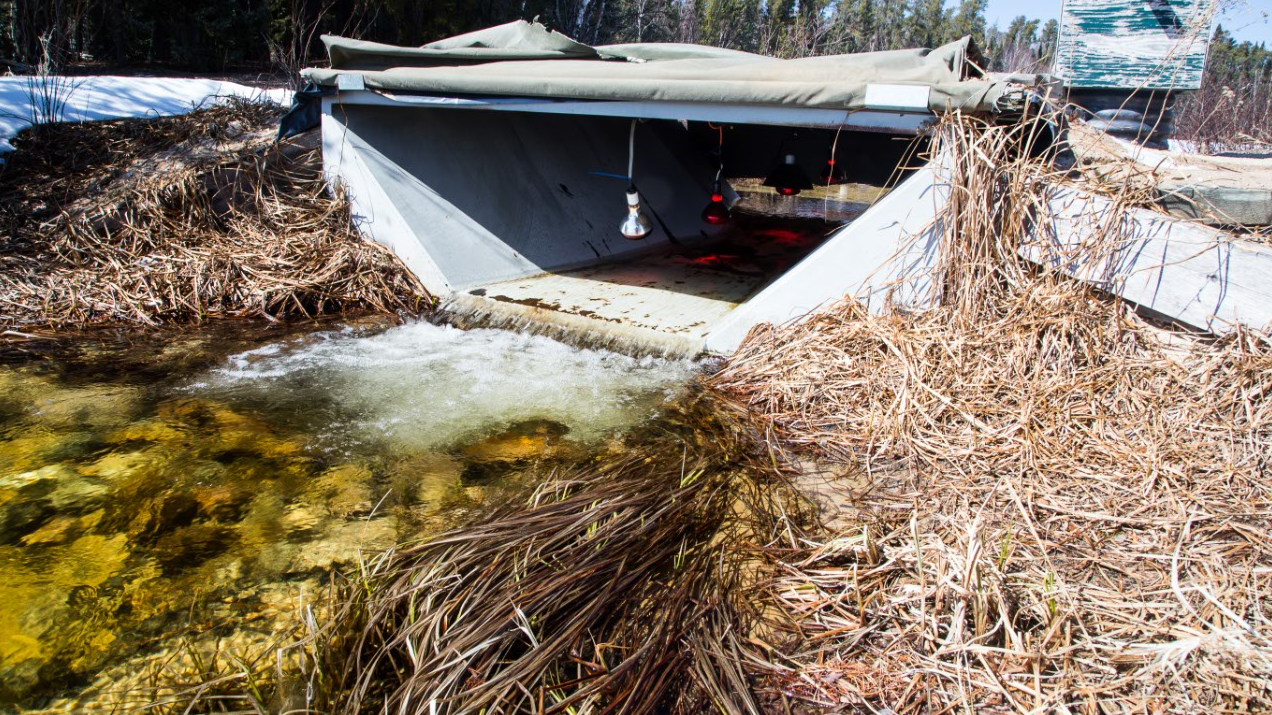
Because this flume is heated, we are able to keep a data logger going throughout the winter, which allows us to have a continuous measurement of flow. The continuous data record on Lake 239 is valuable, as it allows us to create an annual water budget for the lake, which takes into account inflows, outflow, precipitation and evaporation; we can then scale this water budget to other lakes in the area.
The Meteorological Site
Another year-round program is our Meteorological Site, where we continue to measure temperature, precipitation, wind, humidity and solar radiation throughout the winter. We also sample precipitation and air for the Canadian Air and Precipitation Monitoring Network (Environment and Climate Change Canada). In the winter, precipitation is measured using a snowboard and nipher snow gauge to measure daily snowfall amounts (see images below).
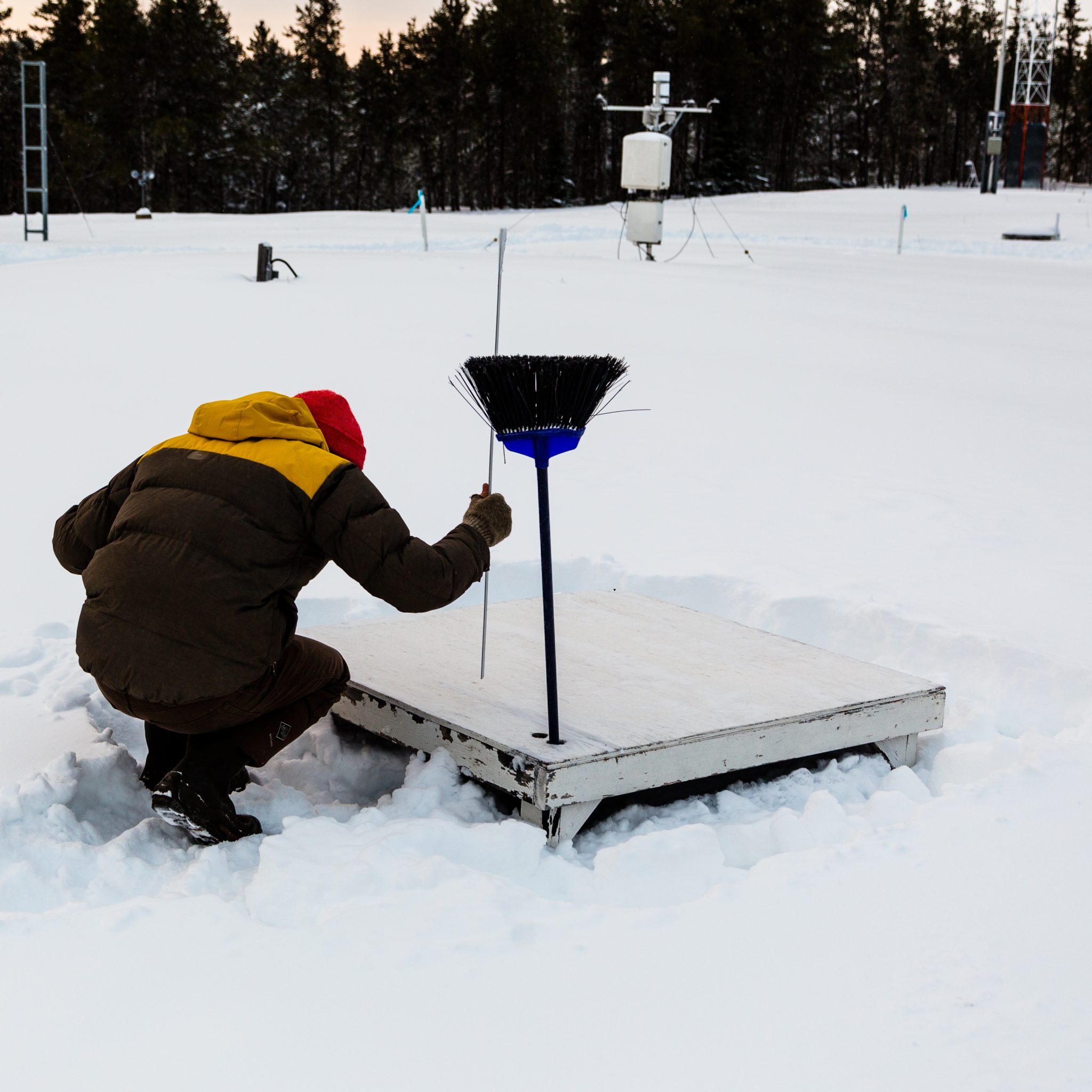
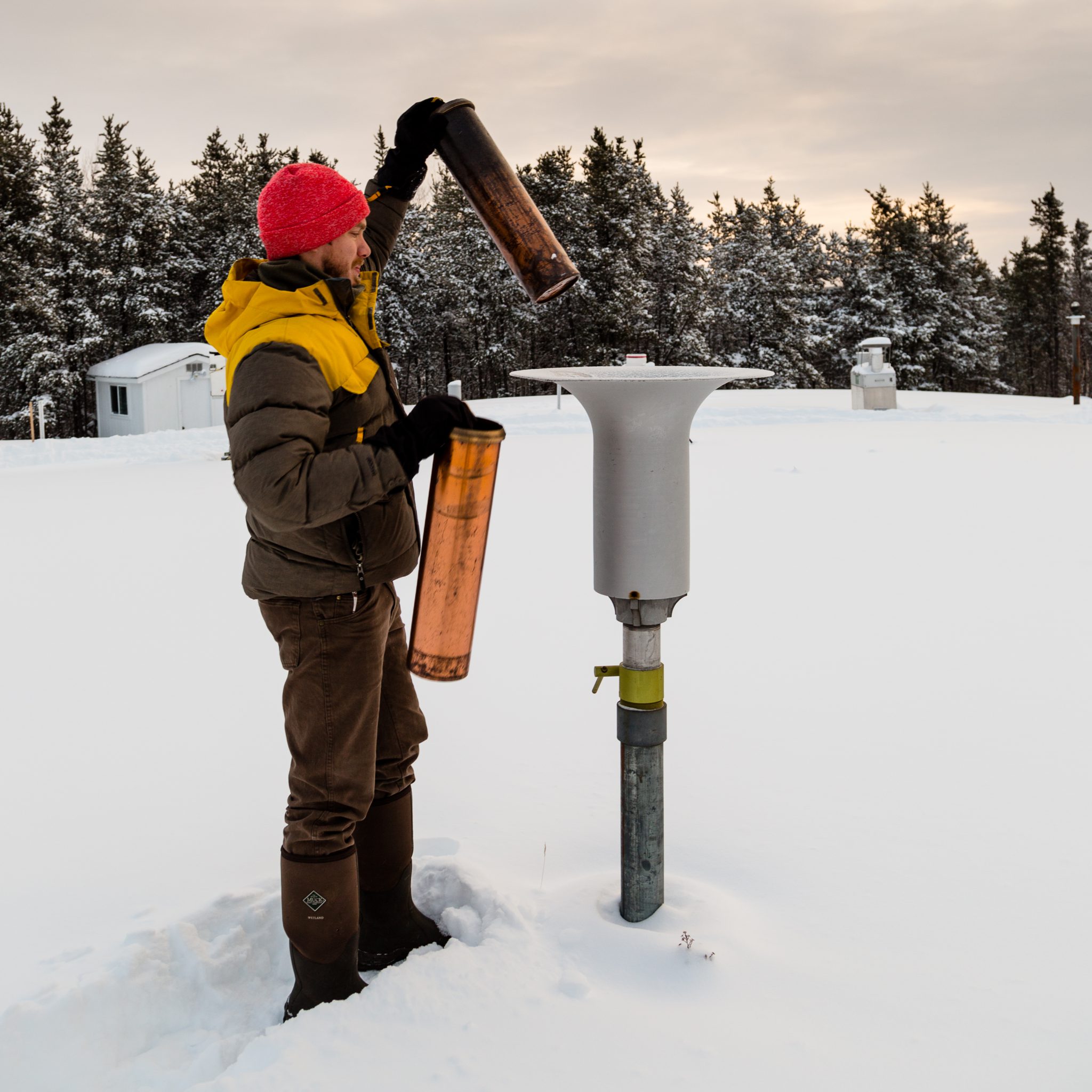
IISD-ELA Is Beautiful in the Winter!
It’s not all work, however. Sometimes we get a chance to appreciate the beautiful winter wonderland that is IISD-ELA in the winter.
Each winter trip I appreciate how white and clean the snow looks without all that sand and salt that you may experience in urban areas.

Sometimes we are lucky enough to see the lake ice before it snows, and some of its beautiful ice formations.
